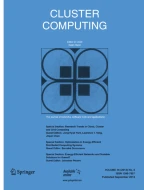Abstract
Due to the large amount of usage data collected from smart home appliances in an IoT-cloud environment, efficient mining techniques are of great need to capture the behavioral patterns. Existing mining algorithms are time-consuming and error prone as the amount of data is increasing rapidly. In this paper, we propose an abstraction approach to model temporal data based on an ordered decision tree (ODT) and spatiotemporal characteristics of usage data for IoT-cloud paradigm. The contribution of this research is to provide an efficient representation in terms of average length of patterns, while preserving the spatiotemporal characteristics of original data. We performed extensive experiments on synthetic data to report the performance and provide a comparison with state-of-the-art algorithms to prove the correctness of the proposed technique, even at a low-level of abstraction. The results indicate that the proposed methodology outperform existing techniques due to the inherited power of the ODT temporal structure.
Access this article
We’re sorry, something doesn't seem to be working properly.
Please try refreshing the page. If that doesn't work, please contact support so we can address the problem.
Similar content being viewed by others
References
Al Zamil, M.G., Samarah, S.: The application of semantic-based classification on big data. In: 2014 5th International Conference on Information and Communication Systems (ICICS), pp. 1–5. IEEE (2014)
Zamil, M.G.A.: Verifying smart sensory systems on cloud computing frameworks. Proc. Comput. Sci. 52, 1126–1132 (2015)
Al Zamil, M.G., Samarah, S.: Application of design for verification to smart sensory systems. In: Qatar Foundation Annual Research Conference (No. 1, p. ITPP0366) (2014)
Aritoni, O., Negru, V.: A Methodology for Household Appliances Behaviour Recognition in AmI Systems. In: Proceedings of the 7th International Conference on Autonomic and Autonomous Systems (ICAS’11), pp. 175–178 (2011)
Kobus, C.B., Klaassen, E.A., Mugge, R., Schoormans, J.P.: A real-life assessment on the effect of smart appliances for shifting households’ electricity demand. Appl. Energy 147, 335–343 (2015)
Dirienzo, T.P., Krishnan, N., Santos, J.R.: Effects of smart appliances on residential consumption patterns. In: Systems and Information Engineering Design Symposium (SIEDS), 2014, pp. 188–192. IEEE (2014)
Bassamzadeh, N., Ghanem, R., Lu, S., Kazemitabar, S.J.: Robust scheduling of smart appliances with uncertain electricity prices in a heterogeneous population. Energy Build. 84, 537–547 (2014)
Chen, Y.C., Ko, Y.L., Peng, W.C., Lee, W.C.: Mining appliance usage patterns in smart home environment. In: Advances in Knowledge Discovery and Data Mining, pp. 99–110. Springer, Berlin (2013)
Chen, Y.C., Chen, C.C., Peng, W.C., Lee, W.C.: Mining correlation patterns among appliances in smart home environment. In: Advances in Knowledge Discovery and Data Mining, pp. 222–233. Springer, Berlin (2014)
Bourobou, S.T.M., Yoo, Y.: User activity recognition in smart homes using pattern clustering applied to temporal ANN algorithm. Sensors 15(5), 11953–11971 (2015)
Yan, X., Han, J., Afshar, R.: CloSpan: mining closed sequential patterns in large datasets. In: SDM, pp. 166–177 (2003)
Clarke, E.M., Grumberg, O., Peled, D.: Model Checking. MIT Press, Cambridge (1999)
Samarah, S., Al Zamil, M., Saifan, A.: Model checking based classification technique for wireless sensor networks. New Rev. Inf. Netw. 17(2), 93–107 (2012)
Zamil, M.A., Samarah, S., Saifan, A., Smadi, I.A.: Dispersion-based prediction framework for estimating missing values in wireless sensor networks. Int. J. Sens. Netw. 12(3), 149–159 (2012)
Zamil, M.G.A., Samarah, S.: Dynamic event classification for intrusion and false alarm detection in vehicular ad hoc networks. Int. J. Inf. Commun. Technol. 8(2–3), 140–164 (2016)
Agrawal, R., Srikant, R.: Mining sequential patterns. In: Proceedings of the Eleventh International Conference on Data Engineering, pp. 3–14. IEEE (1995)
Srikant, R., Agrawal, R.: Mining Sequential Patterns: Generalizations and Performance Improvements, pp. 1–17. Springer, Berlin (1996)
Pei, J., Han, J., Mortazavi-Asl, B., Wang, J., Pinto, H., Chen, Q., et al.: Mining sequential patterns by pattern-growth: the prefixspan approach. IEEE Trans. Knowl. Data Eng. 16(11), 1424–1440 (2004)
Wang, J., Han, J.: BIDE: Efficient mining of frequent closed sequences. In: Proceedings of the 20th International Conference on Data Engineering, pp. 79–90. IEEE (2004)
Gomariz, A., Campos, M., Marin, R., Goethals, B.: Clasp: An efficient algorithm for mining frequent closed sequences. In: Advances in Knowledge Discovery and Data Mining, pp. 50–61. Springer, Berlin (2013)
Fournier-Viger, P., Gomariz, A., Campos, M., Thomas, R.: Fast vertical mining of sequential patterns using co-occurrence information. In: Advances in Knowledge Discovery and Data Mining, pp. 40–52. Springer, Berlin (2014)
Chen, Y.C., Jiang, J.C., Peng, W.C., Lee, S.Y.: An efficient algorithm for mining time interval-based patterns in large database. In: Proceedings of the 19th ACM International Conference on Information and Knowledge Management, pp. 49-58. ACM, New York (2010)
Wu, S.Y., Chen, Y.L.: Mining nonambiguous temporal patterns for interval-based events. IEEE Trans. Knowl. Data Eng. 19(6), 742–758 (2007)
Moskovitch, R., Shahar, Y.: Fast time intervals mining using the transitivity of temporal relations. Knowl. Inf. Syst. 42(1), 21–48 (2015)
Hassani, M., Beecks, C., Töws, D., Seidl, T.: Mining sequential patterns of event streams in a smart home application. In: LVA (2015)
Zhang, S., Wu, X., Zhang, C., Lu, J.: Computing the minimum-support for mining frequent patterns. Knowl. Inf. Syst. 15(2), 233–257 (2008)
Available at: http://www.philippe-fournier-viger.com/spmf/
Acknowledgements
The authors extend their appreciation to the Deanship of Scientific Research at King Saud University for funding this work through the research group project No. RGP-049.
Author information
Authors and Affiliations
Corresponding author
Rights and permissions
About this article
Cite this article
Al Zamil, M.G.H., Samarah, S.M.J., Rawashdeh, M. et al. An ODT-based abstraction for mining closed sequential temporal patterns in IoT-cloud smart homes. Cluster Comput 20, 1815–1829 (2017). https://doi.org/10.1007/s10586-017-0837-0
Received:
Revised:
Accepted:
Published:
Issue Date:
DOI: https://doi.org/10.1007/s10586-017-0837-0
